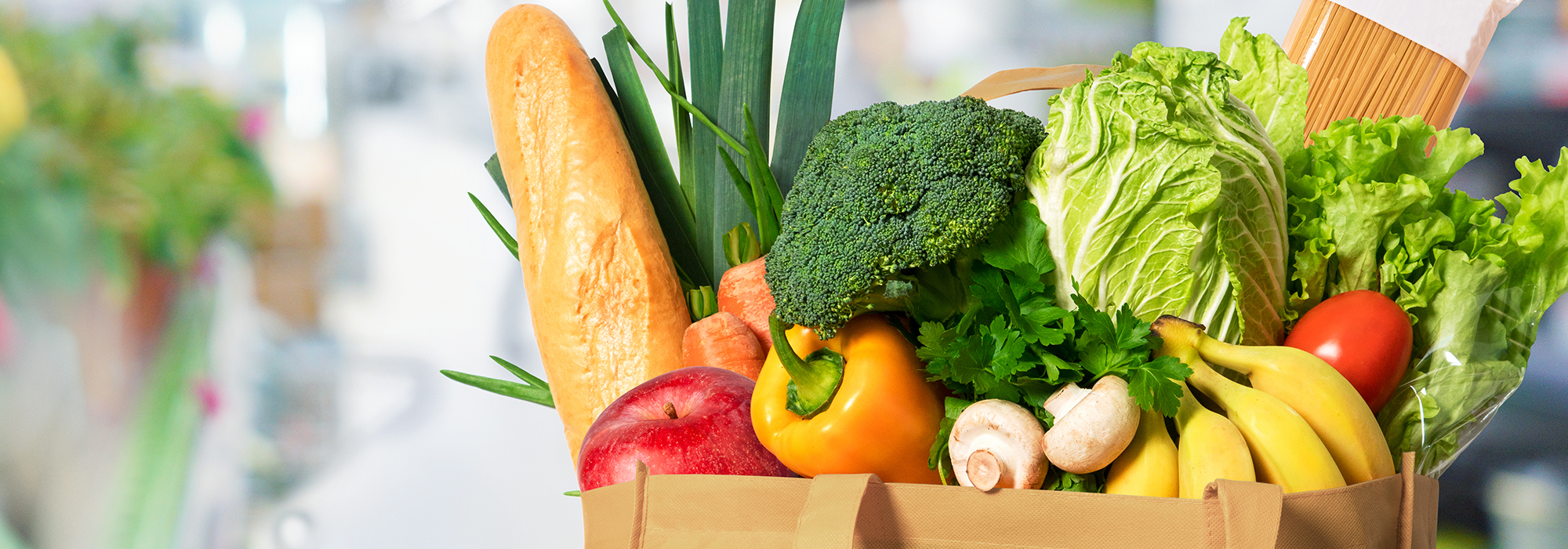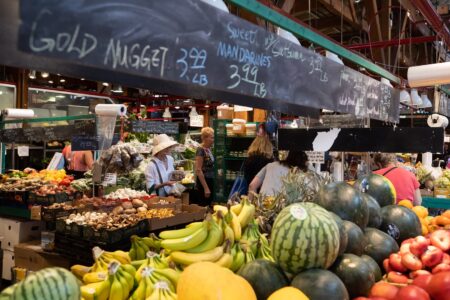
The average Canadian spends about $200 per month on groceries. This varies depending on where you live. In Toronto, for example, the price is closer to $254 a month, according to a Global News analysis of Statistics Canada data. The City of Toronto costs out a nutritious food basket for a single person receiving social assistance at $285 a month.
Back in 1995, Ontario’s then-social services minister David Tsubouchi produced a sample welfare diet as a way of arguing that people could get buy on diminished social assistance. We took another look at that diet last year, and determined that the cost for a single person had risen from $90.21 a month to about $168, an increase of 86.3 percent – far ahead of both inflation and social assistance increases over the period.
Then there are those who argue, as American author Todd Christensen does, that with effort, selective buying, substitution, coupon clipping and superior cooking skills, one adult can eat a nutritious diet for as little as US$125 a month – about $166 Canadian.
All of these estimates, from the lowest to the highest, are premised on assembling and preparing reasonably nutritious foods at home using basic ingredients. All of them ignore what we are calling the externalities of food consumption.
In the language of economists, externalities “occur when producing or consuming a good causes an impact on third parties not directly related to the transaction. Externalities can either be positive or negative. They can also occur from production or consumption.”
Preparing and safely consuming reasonably nutritious food depends on a number of externalities that most of us take for granted. Nowhere do they come into higher relief than when we consider the situation of single adults living on a very low income.
This is important because Canada has announced the adoption of a new poverty line, and it is based on the Market Basket Measure (MBM), a measure of low income based on the cost of a specific basket of goods and services representing a modest, basic standard of living. The basket measure contains an exhaustive list of food – but none of the costs of food externalities.
Consider six such food externalities that shape the true cost of food:
Externality #1: Finding affordable food
For single adults receiving social assistance, having a car or a van is an exception; it is not the rule. This means that public transit, biking and walking are the normal modes of transportation.
A sub-compact car – the smallest of the small – can cost 37 cents a kilometre to run. Middle-income adults can use that car to comparison shop and get to supermarkets with a full array of nutritious food choices. Low-income adults are more limited in what they can access, depending on the transportation they rely on.
Externality #2: Taking the groceries home
David Tsubouchi’s 1995 welfare diet was premised on doing a month’s worth of food shopping at a time. The weight of the welfare diet is about 56 kg. There are adults who weigh that much. The heaviest items include:
- a 4.5 kg bag of potatoes,
- 16 litres of milk (4 of the 4-litre format),
- 12 apples,
- 12 oranges,
- 2 heads of cauliflower,
- 4 kg of rice,
- 4 bags of pasta (900 grams each),
- 12 cans of beans (540 mL each),
- peanut butter (900 grams).
The list goes on, with lighter items. But try lifting all that.
The highest-rated folding shopping buggy that can carry almost all of the welfare diet’s weight is the Versacart folding utility cart. It can carry 54 kg of groceries.
But it would be difficult to roll a Versacart for much more than a kilometre on flat ground. Use of public transit would require lifting the 54-kg cart onto a bus, a difficult task for many. And if you don’t use a cart, the most you can heft is about 23 kg for any appreciable distance. O’Shea’s Formula estimates that a 50-kg person can heft a 22.5-kg backpack weight on a hike. Interestingly, the heavier the person, the less she or he can carry.
What this all means is that a single person without access to an automobile likely would need at least two trips to safely carry or roll the welfare diet to their home. That reality could raise the cost of buying the diet by $10 a month, factoring in public transit (without a bus or train pass) plus the higher cost of buying smaller quantities more frequently.
Externality #3: Basic storage
Once your monthly food has arrived home, it must be stored. For low-income adults living in a safe and secure apartment like a rent-geared-to-income unit, storing canned and dry goods does not present difficulties.
However, for a single person living in a rooming house, a monthly shop means there has to be sufficient, safe storage space for about 25 kilograms of food. Items left in common spaces or unsecured rooms can easily go missing.
Externality #4: Refrigeration and freezing
To safely store more than 30 kilograms of dairy products, meat, fruits, and vegetables, you need a refrigerator. A single person needs a minimum of 4 cubic feet (0.113 cubic metres) of refrigerator space. A bar fridge will do. A low-income person living in a single room might be able to manage this, but many rooming houses do not always allow bar fridges. They insist instead that tenants share central fridges.
That’s because bar fridges in a rooming house with multiple single rooms would overpower electrical circuitry not meant for these loads. There are a lot of fires in rooming houses, especially in winter.
Freezing is a safe way of preserving perishable foods bought in bulk. But freezer space in a central fridge is almost always shared among rooming-house tenants. Space is limited when it is available at all.
Only people in apartments can enjoy normal access to secure, adequate refrigeration and freezing.
Externality #5: Safe cooking
Those fortunate enough to live in subsidized housing or secure, shared accommodation generally have access to a stove and oven. Those who do not use three fairly inexpensive appliances: a hot plate, a toaster oven or a microwave.
All cooking devices are significant draws on electricity. Hot plates in particular are considered dangerous. The main concern respecting cooking is always safety as it relates to the quality of the electrical circuitry in the accommodations that low income adults can secure.
Externality #6: Food choices and fear of hunger
It is often thought that the poor need education in nutrition. Yet researchers find that low-income people generally have a good understanding of what nutritious food is. What they value most, however, is “abundance.”
Even when all of the other externalities are overcome, food behaviour is often influenced by fear of being hungry. Food banks say that missing meals is a huge concern for their clients. If you are “eating calories” for fear of not having enough, food choices become less than optimum, often leading to calorie-based weight gain in low-income people.
Without the means to buy enough healthy, fresh, food to erase the worry that there won’t be enough of it, good nutritional choices become yet another food externality.
Why do we fail to factor in food externalities?
The problem with understanding the impact of food externalities is that we see these externalities as part of normal living, unrelated in many ways to consuming a reasonable diet. For example, we see an automobile as a means of getting to work and recreation, not just food shopping. But a portion of the cost of that automobile goes into driving down the price of our food. As we have demonstrated, the cost of food decreases as reliance on externalities grows.
Those who boast that they can lower the monthly cost of a grocery bill often achieve the “food only” savings by increasing the costs of food externalities. They begin by placing no value on their time and then freely travel by automobile to search out bargains, buying in bulk, which requires more storage, refrigeration and freezer costs. They prepare and cook food for longer periods using safe appliances. They spend on bandwidth and publications to get tasty, cheap, nutritious recipes. All that spending lowers their food costs.
Todd Christensen even brags that his inestimable wife can reduce the monthly food bill to just $50 per person – but this is, of course, based on family shopping, an economy of scale unavailable to single adults on welfare.
Governments, too, are constantly seduced into conversations about the cost of food for low-income consumers without considering food externalities.
The Market Basket Measure is Canada’s first official poverty line since Confederation, and the cost of it is precisely measured. But in focusing solely on the cost of the food in it, the costs of obtaining and consuming the food are ignored.
If Canadians are serious about poverty reduction, policymakers must engage in a discussion around the ways in which the basket can truly become affordable. To set a realistic price for the basket, Statistics Canada and others who measure poverty need to fully understand what it takes to buy groceries for a month – not just what the groceries cost, but what everything else costs.
As we move toward the formal adoption of Canada’s new poverty line in legislation, let’s hope that the externalities of food play a prominent role in the analysis.
Photo: Shutterstock, by hacohob
Do you have something to say about the article you just read? Be part of the Policy Options discussion, and send in your own submission. Here is a link on how to do it. | Souhaitez-vous réagir à cet article ? Joignez-vous aux débats d’Options politiques et soumettez-nous votre texte en suivant ces directives.










